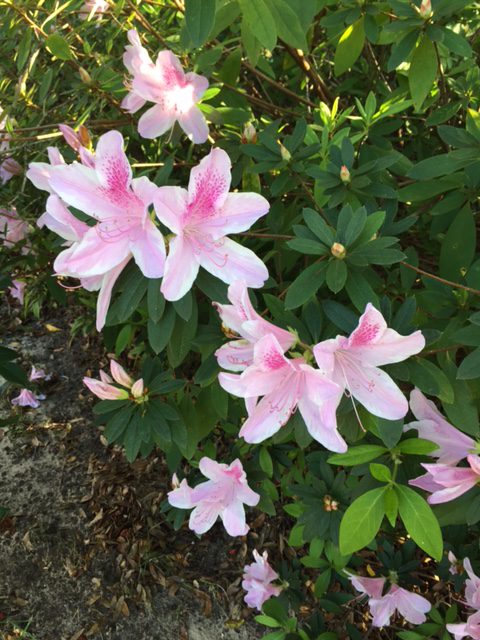
by Carrie Stevenson | Feb 23, 2017
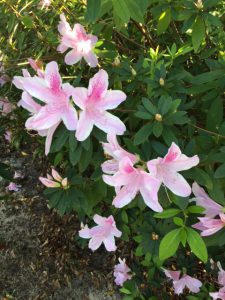
Azaleas have been in full bloom this year since mid-February. Photo credit: Carrie Stevenson
It’s mid-February, and regardless of the groundhog’s prediction, spring seems to have arrived in northwest Florida. In my neighborhood, all the azaleas have bloomed. While beautiful, it’s something that usually doesn’t happen around here until well into March!
According to NOAA and NASA climate data, 2016 was the hottest year globally on record, followed by the previous hottest years, 2015 and 2014. In fact, 16 of the 17 warmest years documented (since official record keeping began in 1880) have been since 2001. The United States also experienced a record-setting year of natural disasters in 2016, ranging from floods to droughts and wildfires.
As the warming trend continues, gardeners, farmers, and wildlife managers alike will find it necessary to adjust their long-held practices. When plants bloom or put on fruit early, these changes can have real economic and commercial impacts. Farmers compete on a global scale to get products to market, and if northern climates start experiencing warmer temperatures, Florida farmers could lose their competitive edge.
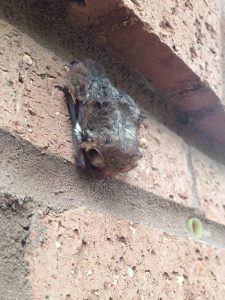
Juvenile bats are vulnerable and therefore protected by state laws during late spring through summer in Florida. Photo credit: Carrie Stevenson
In natural systems, a change in migration or hatching could affect the success of a protected species’ survival. The time frames for these life stages are often legally protected by state or federal laws. For example, in Florida, bats cannot be “excluded” from a building between the April 16-August 14 due to the maternity season. Beach re-nourishment projects are restricted and heavily monitored during sea turtle nesting from May-October. If these time frames start skewing earlier in the year due to changing temperatures and early onset of spring and summer, laws or common practices might need to be evaluated and changed.
In response to these changes in weather patterns, the interesting science of phenology (not to be confused with the brain-mapping “science” of phrenology) has regained popularity in recent years. Phenology is the study of when annual events in the natural world begin—the first hatching of shorebirds, the blooming of spring flowers, the migration of butterflies. For many years, both amateur and professional naturalists have kept records of these phenomena, observing them for pure scientific interest. Now, phenology research has become real-time documentation of a changing world. There are several national networks of citizen scientists making observations and recording them online, including Project Budburst, FrogWatch USA, and the National Phenology Network. If you enjoy spending time outdoors, consider joining one of the many phenology networks and contributing to the larger body of scientific observation. The more we understand about climate-related changes, the better we can prepare and adapt.

by Sheila Dunning | Oct 7, 2016

Monarch butterfly on dense blazing star (Liatris spicata var. spicata).
Beverly Turner, Jackson Minnesota, Bugwood.org
Each fall, nature puts on a brilliant show of color throughout the United States. As the temperatures drop, autumn encourages the “leaf peepers” to hit the road in search of the red-, yellow- and orange-colored leaves of the northern deciduous trees.
In Northwest Florida the color of autumn isn’t just from trees. The reds, purples, yellow and white blooms and berries that appear on many native plants add spectacular color to the landscape. American Beautyberry, Callicarpa americana, is loaded with royal-colored fruit that will persist all winter long. Whispy pinkish-cream colored seedheads look like mist atop Purple Lovegrass, Eragrostis spectabilis and Muhlygrass, Muhlenbergia capillaris.
The Monarchs and other butterfly species flock to the creamy white “fluff” that covers Saltbrush, Baccharis halimifolia. But, yellow is by far the dominant fall flower color. With all the Goldenrod, Solidago spp., Narrowleaf Sunflower, Helianthus angustifolius and Tickseed, Coreopsis spp., the roadsides are golden. When driving the roads it’s nearly impossible to not see the bright yellows in the ditches and along the wood’s edge. Golden Asters (Chrysopsis spp.), Tickseeds (Coreopsis spp.), Silkgrasses (Pityopsis spp.), Sunflowers (Helianthus spp.) and Goldenrods (Solidago spp.) are displaying their petals of gold at every turn. These wildflowers are all members of the Aster family, one of the largest plant families in the world. For most, envisioning an Aster means a flower that looks like a daisy. While many are daisy-like in structure, others lack the petals and appear more like cascading sprays.
So if you are one of the many “hitting the road in search of fall color”, head to open areas. For wildflowers, that means rural locations with limited homes and businesses. Forested areas and non-grazed pastures typically have showy displays, especially when a spring burn was performed earlier in the year. Peeking out from the woods edge are the small red trumpet-shaped blooms of Red Basil, Calamintha coccinea and tall purple spikes of Gayfeather, Liatris spp.
Visit the Florida Wildflower Foundation website, www.flawildflowers.org/bloom.php, to see both what’s in bloom and the locations of the state’s prime viewing areas. These are all native wildflowers that can be obtained through seed companies. Many are also available as potted plants at the local nurseries. Read the name carefully though. There are cultivated varieties that may appear or perform differently than those that naturally occur in Northwest Florida. For more information on Common Native Wildflowers of North Florida go to http://edis.ifas.ufl.edu/ep061.
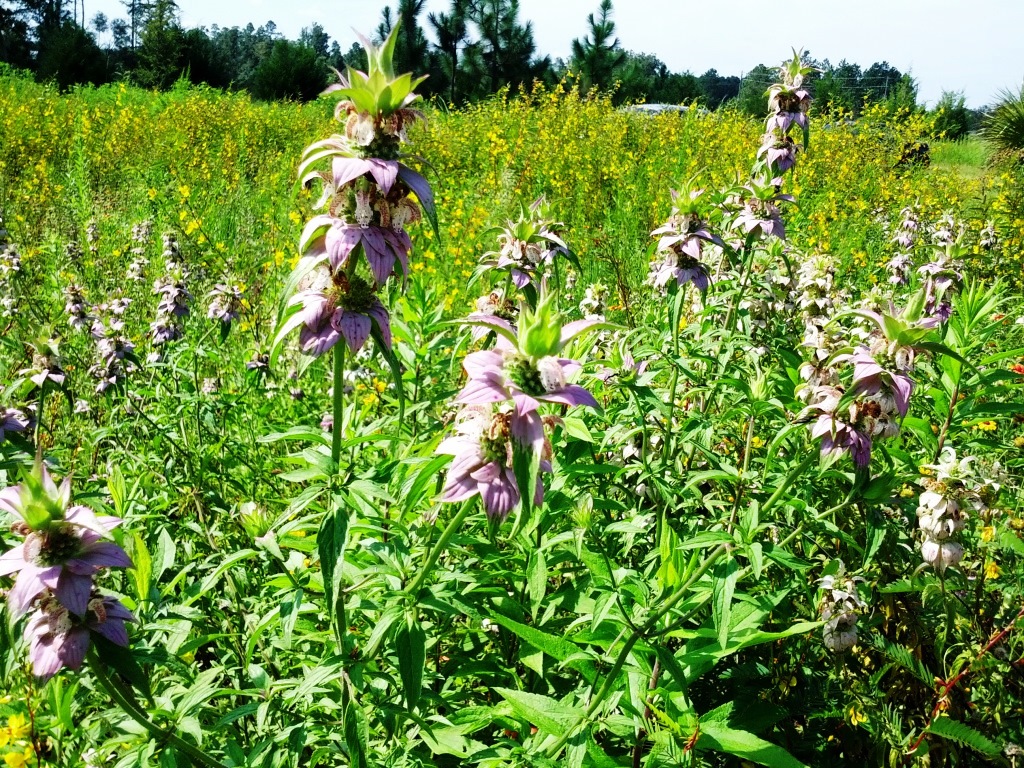
by Gary Knox | Oct 7, 2016
 A “Gardening for Pollinator Conservation” Workshop will take place Thursday, October 13, at the UF/IFAS North Florida Research and Education Center (NFREC) in Quincy. Pollinators are important in conserving native plants, ensuring a plentiful food supply, encouraging biodiversity and helping maintain a healthier ecological environment – – – the so-called “balance of nature.” Come learn how you can conserve and promote pollinators in your own garden, all while beautifying your own little piece of Nature.
A “Gardening for Pollinator Conservation” Workshop will take place Thursday, October 13, at the UF/IFAS North Florida Research and Education Center (NFREC) in Quincy. Pollinators are important in conserving native plants, ensuring a plentiful food supply, encouraging biodiversity and helping maintain a healthier ecological environment – – – the so-called “balance of nature.” Come learn how you can conserve and promote pollinators in your own garden, all while beautifying your own little piece of Nature.
As in previous years, nursery vendors will be selling pollinator plants at the Oct. 13 workshop, making it convenient for you to put into practice what you learn at the workshop! Registration is just $15 per person and includes lunch, refreshments, and handouts.
Check out the workshop details and register at: https://gardeningforpollinatorconservation.eventbrite.com/
What: Gardening for Pollinator Conservation
When: Thursday, October 13, 8:30 am to 5:00 pm EDT
Where: University of Florida/IFAS North Florida Research and Education Center, 155 Research Road, Quincy, FL. Located just north of I-10 Exit 181, 3 miles south of Quincy, off Pat Thomas Highway, SR 267.
Cost: $15 per person (includes lunch, refreshments and handouts)
Registration: https://gardeningforpollinatorconservation.eventbrite.com
For more information, contact: Gary Knox, gwknox@ufl.edu; 850.875.7105
For a printable Flyer click here: Gardening for Pollinators Workshop
Our workshop builds on previous successful pollinator workshops held at Leon Co. Extension last year and in Marianna in 2012. This workshop was developed as a collaboration of county faculty from several extension offices with folks from the Florida Fish & Wildlife Conservation Commission as well as UF/IFAS NFREC. Sponsors helping defray costs include Florida Native Plant Society – Magnolia Chapter, Gardening Friends of the Big Bend, Inc., Mail-Order Natives, and University of Florida/IFAS North Florida Research and Education Center.
We look forward to seeing you at the workshop!
by Julie McConnell | Sep 16, 2016
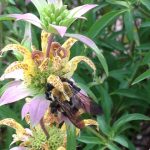
Bee visiting Monarda punctata. Photo: J. McConnell, UF/IFAS
If you are looking for a late summer blooming plant that attracts pollinators and survives in a tough spot, dotted horsemint (Monarda punctata) is for you! This native plant thrives in sunny, well-drained sites but will also tolerate moist garden spots. It grows quickly and blooms prolifically – attracting pollinators by the dozens. A plant covered in blooms is very showy and when you go in for a closer look, you’ll see unique flowers.
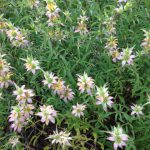
Dotted horsemint brings color to the summer garden. Photo: J. McConnell, UF/IFAS
This plant can get 3 feet tall by 4 feet wide but it is tolerant of pruning in the growing season to keep it tidy and encourage bushiness. Just be sure to prune it before it sets flowers, a good rule of thumb is to prune before the end of June.
Propagation is by division or seed. Few pests affect dotted horsemint.
To read more about this flowering perennial:
Monarda punctata Bee Balm, Horsemint
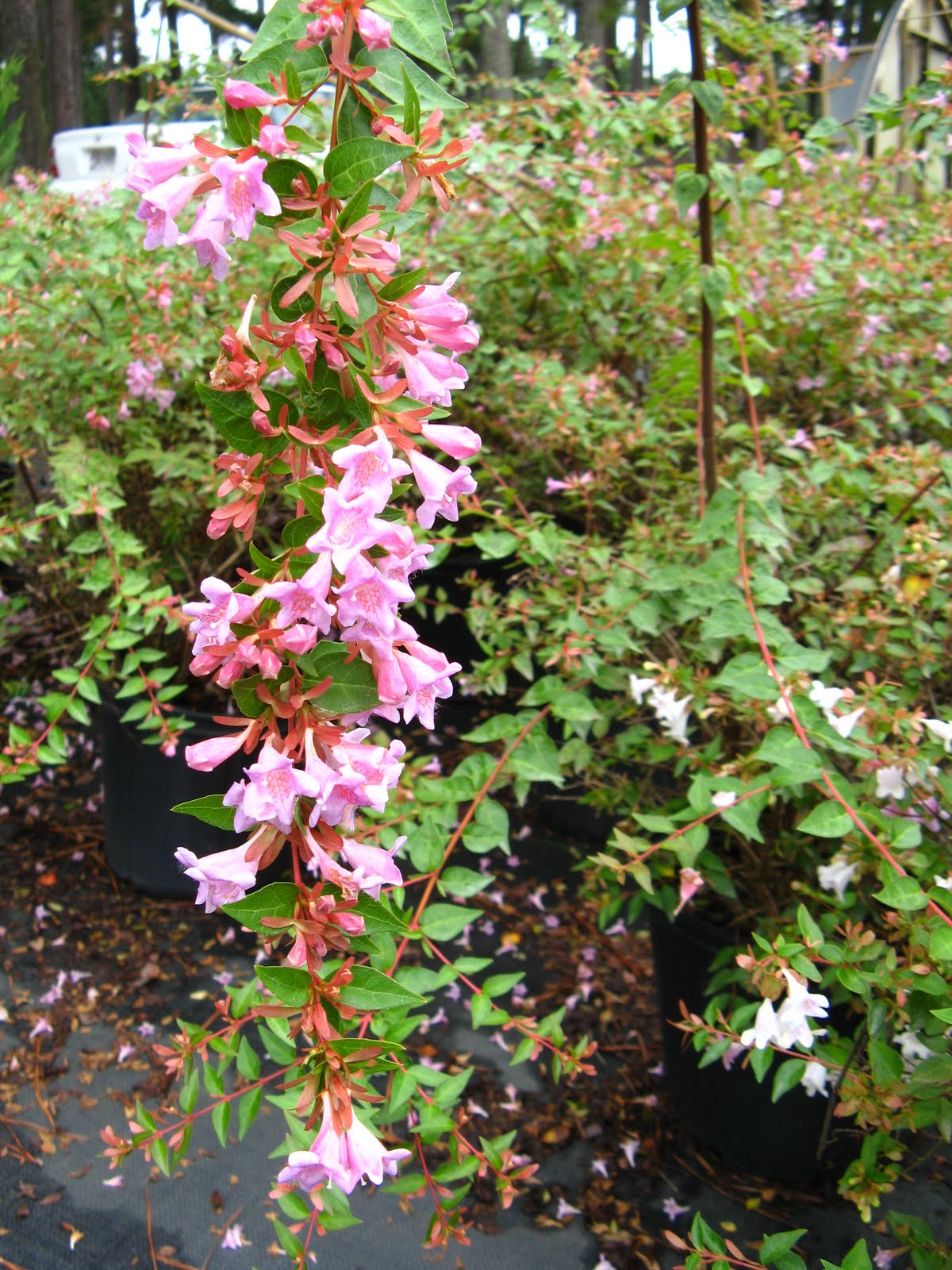
by Julie McConnell | Mar 28, 2016
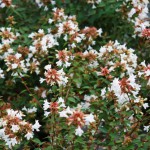
Clusters of tiny white flowers on abelia. Photo: Julie McConnell, UF/IFAS
Abelias have been a landscape staple in the Southeastern United States for over a century. Numerous types have been used over the years, but two of the oldest forms still used in landscapes are Glossy Abelia Abelia x grandiflora and Abelia ‘Edward Goucher’, dating back to the early 1900s.
Glossy Abelia is a large informal shaped shrub with ½ – 1 inch glossy green leaves and large clusters of tiny white flowers. It can grow to 8 feet wide and tall and tolerates tough landscape sites such as full sun, low moisture (once established), acidic or slightly alkaline soils. It blooms prolifically and is attractive to butterflies and pollinators. New stems are reddish colored which contrasts nicely with dark green foliage which may be evergreen if winters are mild. After blooms are spent the pink sepals remain on the plants carrying more color through the season.
‘Edward Goucher’ Abelia does not grow quite as large and is a good performer with pink flowers. It is smaller than Glossy Abelia, but can still reach 5’x5’ when mature. It is also tolerant of hot, dry spots in the landscape.
Over the past few decades there have been many new introductions of abelia cultivars to the market. A major goal of breeders was to offer abelias that would fit into smaller landscapes and there has also been a trend towards variegated foliage color. There are dozens of abelias in production, but a few listed below are usually easy to find in local garden centers and have proven reliable in Florida landscapes.
- Abelia x ‘Rose Creek’ Rose Creek Abelia, low mounding growth habit reaching 2-3’ tall and 3-4’ wide, green foliage, new reddish stems, large clusters of white flowers
- Abelia x grandiflora ‘Hopley’s Lemon Zest™’ Lemon Zest Abelia or Miss Lemon™ Abelia grows 3-4’ tall and wide, has yellow and green variegated foliage, light pink flowers
- Abelia x grandiflora ‘Confetti’ Confetti® Abelia, matures at 3’ tall and wide, new foliage has pink, white, and green variegation and mature foliage is green and white variegated, pink and white flowers
- Abelia x grandiflora ‘Kaleidoscope’ P.P.#16,988 Kaleidoscope Abelia, compact growth 2-3’ tall by 3-3.5’ wide, gold and pink new foliage that matures into gold and green variegation, white flowers
All abelias perform best in full sun to part shade and have low water requirements once established. They are not salt tolerant, so avoid planting in coastal landscapes or in areas where salts are an issue. Abelias have few pest problems, but aphids have been known to feed on new growth – avoid over fertilization.
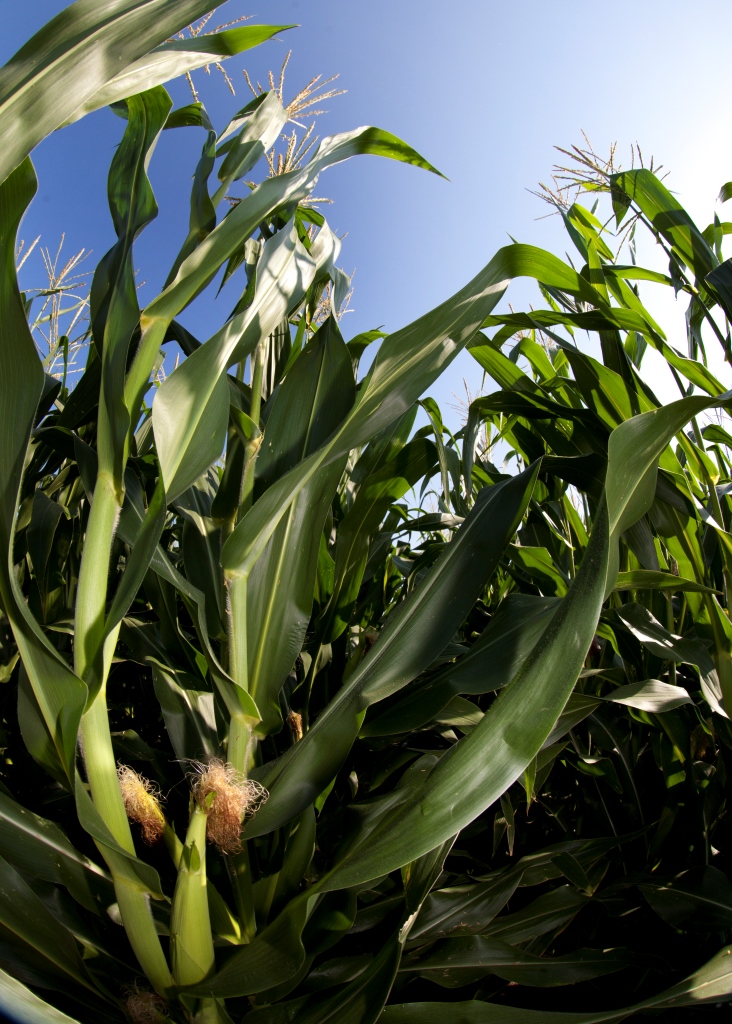
by Judy Biss | Feb 3, 2016

Corn tassels at the top provide the pollen needed to produce the perfect ear of corn on the stalk below. UF/IFAS Photo by Tyler Jones.
It won’t be long until row crops and vegetable gardens are planted and thriving once again next spring. A sometimes taken for granted, yet critical element of any prosperous crop is successful pollination. Most of us know what “text book” pollination means, but did you know in cucurbit plants, (squash, melon, pumpkin) at least 1,000 grains of pollen must be evenly deposited in each bloom to produce a uniform marketable fruit? Or, to grow our favorite summer delight, each watermelon flower must be visited by a honeybee a minimum of 8 times? And how about the fact that each silk in a corn flower is connected to one kernel on the ear of corn, and for the kernel to develop properly pollen must travel down the silk through a pollen tube to the waiting kernel? Add to these facts the dizzying variety of pollen and flowers, bloom times, pollination dynamics, weather conditions, plant growth, and availability of pollinator insects, then one can begin to see how amazing pollination is, and how critical it is to our food supply.
What are the basics of pollination?
The first step of fruit or vegetable reproduction takes place when flowers emerge. Plant flowers can be male, female, or perfect flowers. The male flowers produce pollen. The female flowers have ovaries which, when fertilized, become the fruit or vegetable. “Perfect” flowers have both male and female parts within a single flower. Most garden vegetables such as beans, peppers, and tomatoes have perfect flowers, whereas cucurbits like squash, pumpkins and watermelon, have separate male and female flowers on the same vine. For successful pollination to occur, the male pollen must reach the female ovaries in order for the fruit or vegetable to be produced.
Methods of Pollinating
Transfer of pollen to the plant ovaries for fruit and vegetable production, whether in the same “perfect” flower, or in another separate female flower, occurs in several ways. Some plants, like corn, depend on wind to transfer pollen to the silk, and ultimately ovaries, of the female flower. Other plants, like squash depend on the help of pollinators like insects to deliver the pollen to the ovaries. Plants that produce perfect flowers can self-pollinate, but still benefit from contact with pollinators. In small backyard gardens, many crops in the cucurbit family (squash, melons, etc.) or those that have separate male and female flowers, can be pollinated by the gardener by hand. In the absence of insect pollinators in dooryard gardens, hand pollination will increase yields.
The Importance of Bees
Obviously, in production agriculture, hand pollination of crops is not feasible, and although some crops are wind pollinated, most crops need insect or animal pollinators to accomplish the job. As we know, bees are one of the most important pollinating insects, and it is well documented that yields of many fruit and vegetable crops increase in both quality and quantity when pollinated by honey bees. According to the UF/IFAS publication Minimizing Honey Bee Exposure to Pesticides:
The Business of Pollination
Because they are so critical to increased quality and quantity yields, managed honey bee colonies are used across the country in a thriving contractual pollination industry. According to the UF/IFAS publication Sample Pollination agreement,
The business of pollination is crucial to the agricultural industry in the United States. In Florida, the major need for pollination is in fruit and vegetable production.
And according to the UF/IFAS publication Minimizing Honey Bee Exposure to Pesticides,
Rental of honey bee colonies for pollination purposes is a highly demanded service and a viable component of commercial beekeeping and agriculture. Bee colonies are moved extensively across the country for use in multiple crops every year. There are also over 3,000 registered beekeepers in Florida, managing a total of more than 400,000 honey bee colonies and producing between 10–20 million pounds of honey annually.
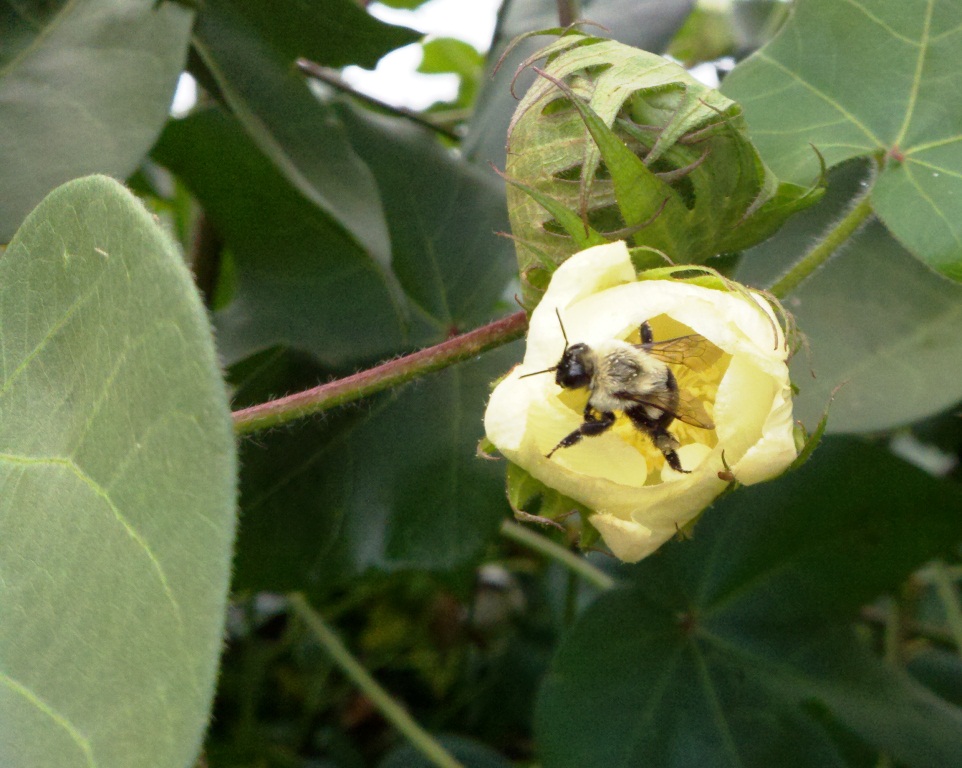
Cotton is largely self-pollinating, but attractive to bees. In some cotton varieties, pollination by bees can increase seed set per boll. Source: University of Georgia Pollination: Crop Pollination Requirements. Photo by Judy Biss
Crop Pollination Requirements
The dynamic of pollination is a fascinating and critical component of both dooryard and production agriculture. Research on plant health, varieties, growth, and potential, as well as research on honey bee colony health and management, all play a role in producing sustainable food yields. The University of Georgia has summarized pertinent literature related to common fruit and vegetable crop pollination requirements (Apple, Blueberry, Cantaloupe, Cucumber, Squash, Watermelon, Other Crops). This comprehensive resource provides the recommended number of beehives per acre for each crop, plus additional information on plant variety characteristics, and other useful information related to maximizing pollination and yield. Check it out: Pollination: Crop Pollination Requirements
So whether you have a dooryard garden or a large farm, it will benefit you to learn all there is to know about your crop’s pollination requirements to maximize yield and quality potential.
For more information on this topic, please see the following publications used as resources for this article:













